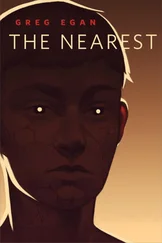Грег Иган - Permutation City
Здесь есть возможность читать онлайн «Грег Иган - Permutation City» весь текст электронной книги совершенно бесплатно (целиком полную версию без сокращений). В некоторых случаях можно слушать аудио, скачать через торрент в формате fb2 и присутствует краткое содержание. Жанр: Фантастика и фэнтези, Киберпанк, на английском языке. Описание произведения, (предисловие) а так же отзывы посетителей доступны на портале библиотеки ЛибКат.
- Название:Permutation City
- Автор:
- Жанр:
- Год:неизвестен
- ISBN:нет данных
- Рейтинг книги:4 / 5. Голосов: 1
-
Избранное:Добавить в избранное
- Отзывы:
-
Ваша оценка:
- 80
- 1
- 2
- 3
- 4
- 5
Permutation City: краткое содержание, описание и аннотация
Предлагаем к чтению аннотацию, описание, краткое содержание или предисловие (зависит от того, что написал сам автор книги «Permutation City»). Если вы не нашли необходимую информацию о книге — напишите в комментариях, мы постараемся отыскать её.
Permutation City — читать онлайн бесплатно полную книгу (весь текст) целиком
Ниже представлен текст книги, разбитый по страницам. Система сохранения места последней прочитанной страницы, позволяет с удобством читать онлайн бесплатно книгу «Permutation City», без необходимости каждый раз заново искать на чём Вы остановились. Поставьте закладку, и сможете в любой момент перейти на страницу, на которой закончили чтение.
Интервал:
Закладка:
She jabbed another icon, a starburst labeled FIAT. The only visible effect was the appearance of a small menu strip hovering low in the foreground -- but to the cluster of programs she'd invoked, the cube of thin air in front of her terminal now corresponded to a small, empty universe.
Maria summoned up a single molecule of nutrose, represented as a ball-and-stick model, and, with a flick of a gloved forefinger, imparted a slow spin. The vertices of the crimped hexagonal ring zig-zagged above and below the molecule's average plane; one vertex was a divalent blue atom, linked only to its neighbors in the ring; the other five were all tetravalent greens, with two bonds left over for other attachments. Each green was joined to a small, monovalent red -- on the top side if the vertex was raised, on the bottom if it was lowered -- and four of them also sprouted short horizontal spikes, built from a blue and a red, pointing away from the ring. The fifth green held out a small cluster of atoms instead: a green with two reds, and its own blue-red spike.
The viewing software rendered the molecule plausibly solid, taking into account the effects of ambient light; Maria watched it spin above the desktop, admiring the not-quite-symmetrical form. A real-world chemist, she mused, would take one look at this and say: Glucose. Green is carbon, blue is oxygen, red is hydrogen . . . no? No. They'd stare awhile; put on the gloves and give the impostor a thorough grope; whip a protractor out of the toolbox and measure a few angles; invoke tables of bond formation energies and vibrational modes; maybe even demand to see nuclear magnetic resonance spectra (not available -- or, to put it less coyly, not applicable). Finally, with the realization of blasphemy dawning, they'd tear their hands from the infernal machinery, and bolt from the room screaming, "There is no Periodic Table but Mendeleev's! There is no Periodic Table but Mendeleev's!"
The Autoverse was a "toy" universe, a computer model which obeyed its own simplified "laws of physics" -- laws far easier to deal with mathematically than the equations of real-world quantum mechanics. Atoms could exist in this stylized universe, but they were subtly different from their real-world counterparts; the Autoverse was no more a faithful simulation of the real world than the game of chess was a faithful simulation of medieval warfare. It was far more insidious than chess, though, in the eyes of many real-world chemists. The false chemistry it supported was too rich, too complex, too seductive by far.
Maria reached into the workspace again, halted the molecule's spin, deftly plucked both the lone red and the blue-red spike from one of the greens, then reattached them, swapped, so that the spike now pointed upward. The gloves' force and tactile feedback, the molecule's laser-painted image, and the faint clicks that might have been plastic on plastic as she pushed the atoms into place, combined to create a convincing impression of manipulating a tangible object built out of solid spheres and rods.
This virtual ball-and-stick model was easy to work with -- but its placid behavior in her hands had nothing to do with the physics of the Autoverse, temporarily held in abeyance. Only when she released her grip was the molecule allowed to express its true dynamics, oscillating wildly as the stresses induced by the alteration were redistributed from atom to atom, until a new equilibrium geometry was found.
Maria watched the delayed response with a familiar sense of frustration; she could never quite resign herself to accepting the handling rules, however convenient they were. She'd thought about trying to devise a more authentic mode of interaction, offering the chance to feel what it was "really like" to grasp an Autoverse molecule, to break and re-form its bonds -- instead of everything turning to simulated plastic at the touch of a glove. The catch was, if a molecule obeyed only Autoverse physics -- the internal logic of the self-contained computer model -- then how could she, outside the model, interact with it at all? By constructing little surrogate hands in the Autoverse, to act as remote manipulators? Construct them out of what? There were no molecules small enough to build anything finely structured, at that scale; the smallest rigid polymers which could act as "fingers" would be half as thick as the entire nutrose ring. In any case, although the target molecule would be free to interact with these surrogate hands according to pure Autoverse physics, there'd be nothing authentic about the way the hands themselves magically followed the movements of her gloves. Maria could see no joy in simply shifting the point where the rules were broken -- and the rules had to be broken, somewhere. Manipulating the contents of the Autoverse meant violating its laws. That was obvious . . . but it was still frustrating.
She saved the modified sugar, optimistically dubbing it mutose. Then, changing the length scale by a factor of a million, she started up twenty-one tiny cultures of Autobacterium lamberti, in solutions ranging from pure nutrose, to a fifty-fifty mixture, to one hundred percent mutose.
She gazed at the array of Petri dishes floating in the workspace, their contents portrayed in colors which coded for the health of the bacteria. "False colors" . . . but that phrase was tautological. Any view of the Autoverse was necessarily stylized: a color-coded map, displaying selected attributes of the region in question. Some views were more abstract, more heavily processed than others -- in the sense that a map of the Earth, color-coded to show the health of its people, would be arguably more abstract than one displaying altitude or rain-fall -- but the real-world ideal of an unadulterated, naked-eye view was simply untranslatable.
A few of the cultures were already looking decidedly sick, fading from electric blue to dull brown. Maria summoned up a three-dimensional graph, showing population versus time for the full range of nutrient mixtures. The cultures with only a trace of the new stuff were, predictably, growing at almost the pace of the control; with increasing mutose substitution the ascent gradually slowed, until, around the eighty-five percent line, the population was static. Beyond that were ever steeper trajectories into extinction. In small doses, mutose was simply irrelevant, but at high enough concentrations it was insidious: similar enough to nutrose -- A. lamberti's usual food -- to be taken part-way through the metabolic process, competing for the same enzymes, tying up valuable biochemical resources . . . but eventually reaching a step where that one stray blue-red spike formed an insurmountable barrier to the reaction geometry, leaving the bacterium with nothing but a useless byproduct and a net energy loss. A culture with ninety percent mutose was a world where ninety per cent of the food supply had no nutritional value whatsoever -- but had to be ingested indiscriminately along with the worthwhile ten percent. Consuming ten times as much for the same return wasn't a viable solution; to survive in the long term, A. lamberti would have to chance upon some means of rejecting mutose before wasting energy on it -- or, better still, find a way to turn it back into nutrose, transforming it from a virtual poison into a source of food.
Maria displayed a histogram of mutations occurring in the bacteria's three nutrose epimerase genes; the enzymes these genes coded for were the closest things A. lamberti had to a tool to render mutose digestible -- although none, in their original form, would do the job. No mutants had yet persisted for more than a couple of generations; all the changes so far had evidently done more harm than good. Partial sequences of the mutant genes scrolled by in a small window; Maria gazed at the blur of codons, and mentally urged the process on -- if not straight toward the target (since she had no idea what that was), then at least . . . outward, blindly, into the space of all possible mistakes.
Читать дальшеИнтервал:
Закладка:
Похожие книги на «Permutation City»
Представляем Вашему вниманию похожие книги на «Permutation City» списком для выбора. Мы отобрали схожую по названию и смыслу литературу в надежде предоставить читателям больше вариантов отыскать новые, интересные, ещё непрочитанные произведения.
Обсуждение, отзывы о книге «Permutation City» и просто собственные мнения читателей. Оставьте ваши комментарии, напишите, что Вы думаете о произведении, его смысле или главных героях. Укажите что конкретно понравилось, а что нет, и почему Вы так считаете.

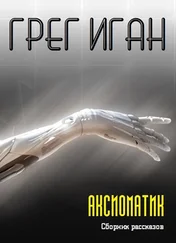
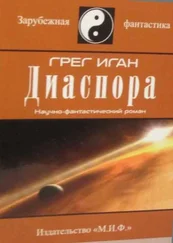
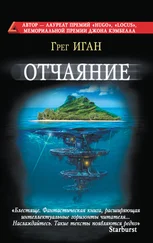
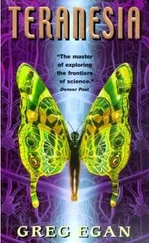
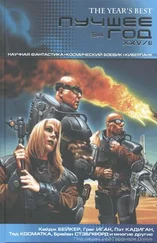
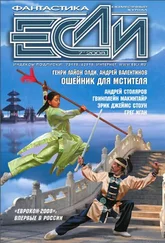
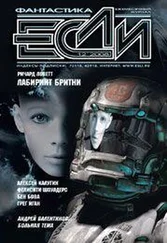
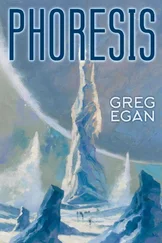
![Грег Иган - Рассказы [компиляция]](/books/419837/greg-igan-rasskazy-kompilyaciya-thumb.webp)
